IN BRIEF
Name Castle End What A modern cottage garden Where Oxfordshire Size One acre Soil Varied clay loam Climate Temperate with average rainfall and prevailing wind Hardiness zone USDA 8b.
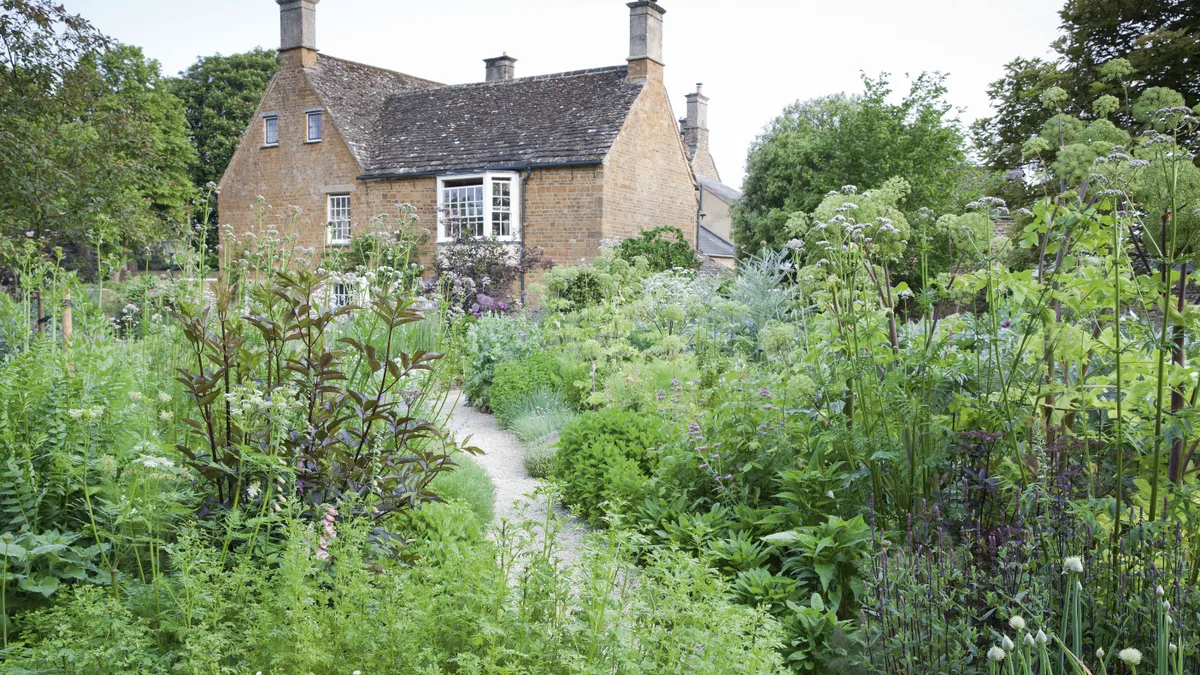
Herb gardens are nothing new. They date back to the monastic gardens of the Middle Ages, where plants were collected and cultivated for culinary and medicinal use. To this day many reference the past, arranged in neat and tidy rows within ordered beds. Not so for the herb garden at Castle End. The current custodians, Petra and Luke Hoyer Millar, prefer a more relaxed approach. One that captures the essence of a traditional English cottage garden, while embracing contemporary planting that is both naturalistic and environmentally aware.
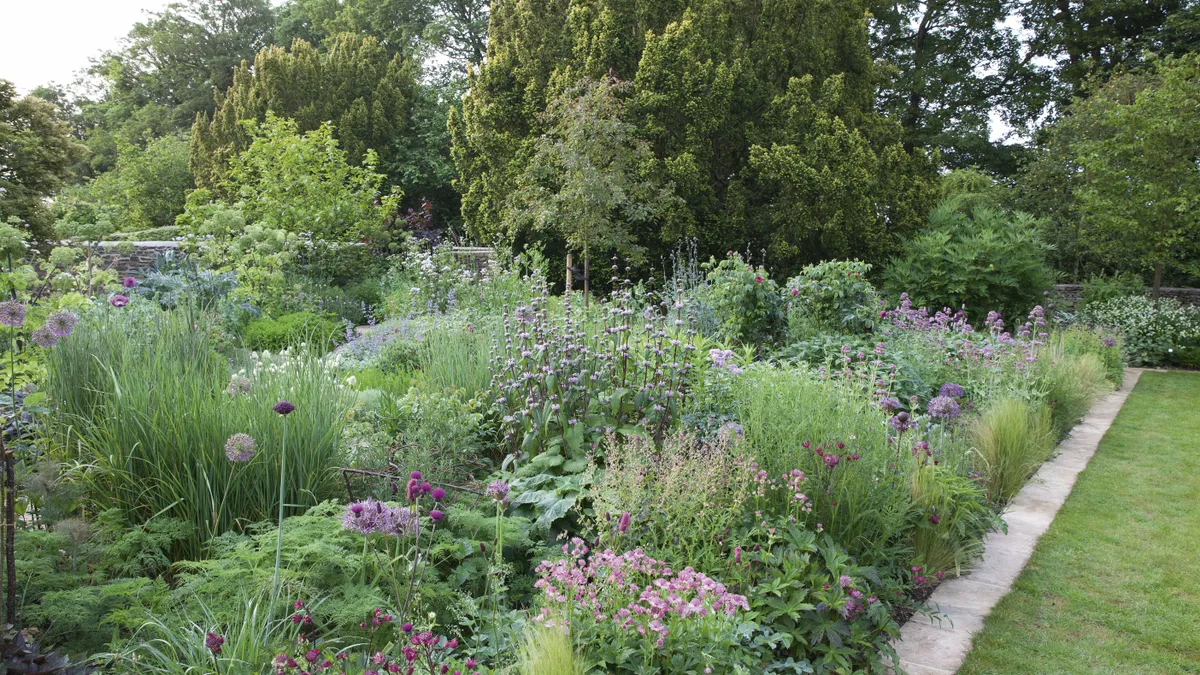
But it is not all about the beauty. A practical attitude, helped by having a husband qualified in architecture, guided Petra’s design of the herb garden. “We wanted to have as much growing space as possible, hence the large borders,” she says, “but realised we needed paths for general access and cultivation.” The solution is a series of tessellated triangular borders, framed with straight narrow paths. Where many would avoid planting to a tapering point, Petra believes that “it’s great for focussing the mind”. The irregular angled beds also help to make use of all the available space in a garden where right angles seldom exist. Before planting, the design was reinforced with the installation of heavy-grade steel edging, denoting border from path. A laborious task that the couple completed themselves, in the knowledge that any ongoing maintenance and lasting aesthetic would yield the rewards. Two years on and the herb garden has settled into an exuberant and frothy matrix of culinary, medicinal and wildlife-friendly plants, all held together and shown to best effect by its strong uncompromising framework.
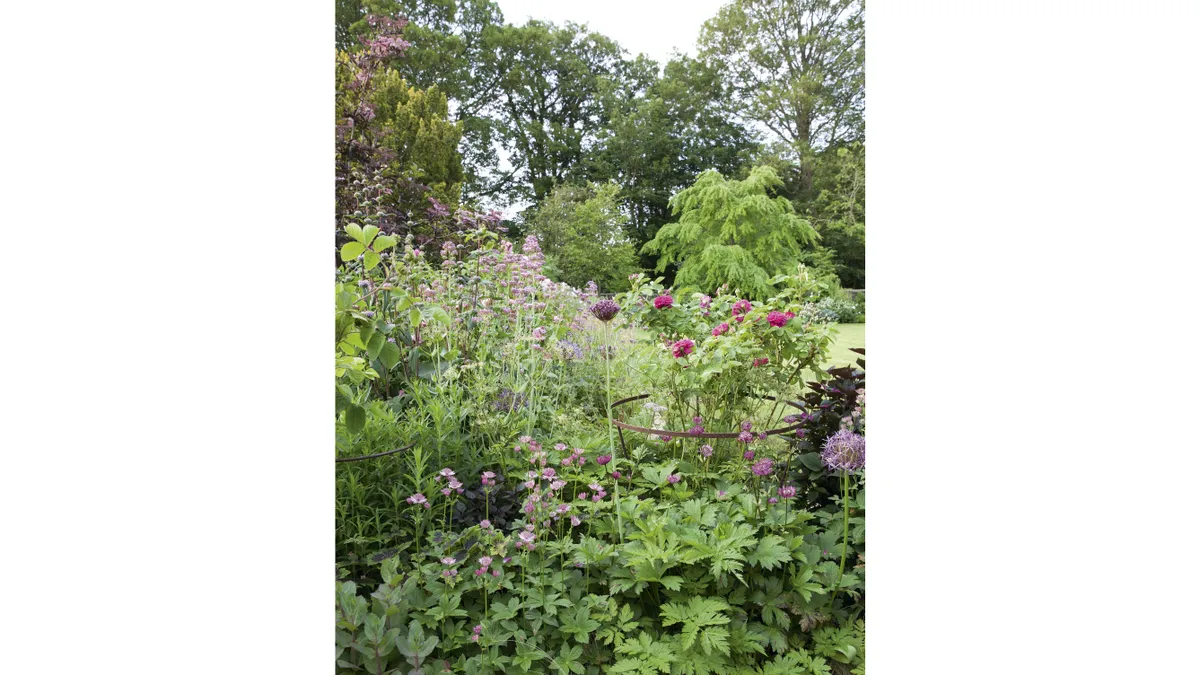
A stroke of genius perhaps, but not one of luck. The herb garden is a culmination of learning, experience and observation that began many years ago, when Petra decided to retrain in horticulture at Miss Havergal’s renowned Waterperry Gardens. While acquiring several RHS qualifications, Waterperry invaluably granted Petra “close inspection and contact with so many plants that were actually growing in a garden setting”. Several stints at the RHS Chelsea Flower Show, planting on show gardens for Jo Thompson, galvanised Petra’s knowledge allowing a better understanding of plant placement and design. Though of course, to paraphrase Gertrude Jekyll, the garden itself is a great teacher and a classroom that both Luke and Petra know very well.
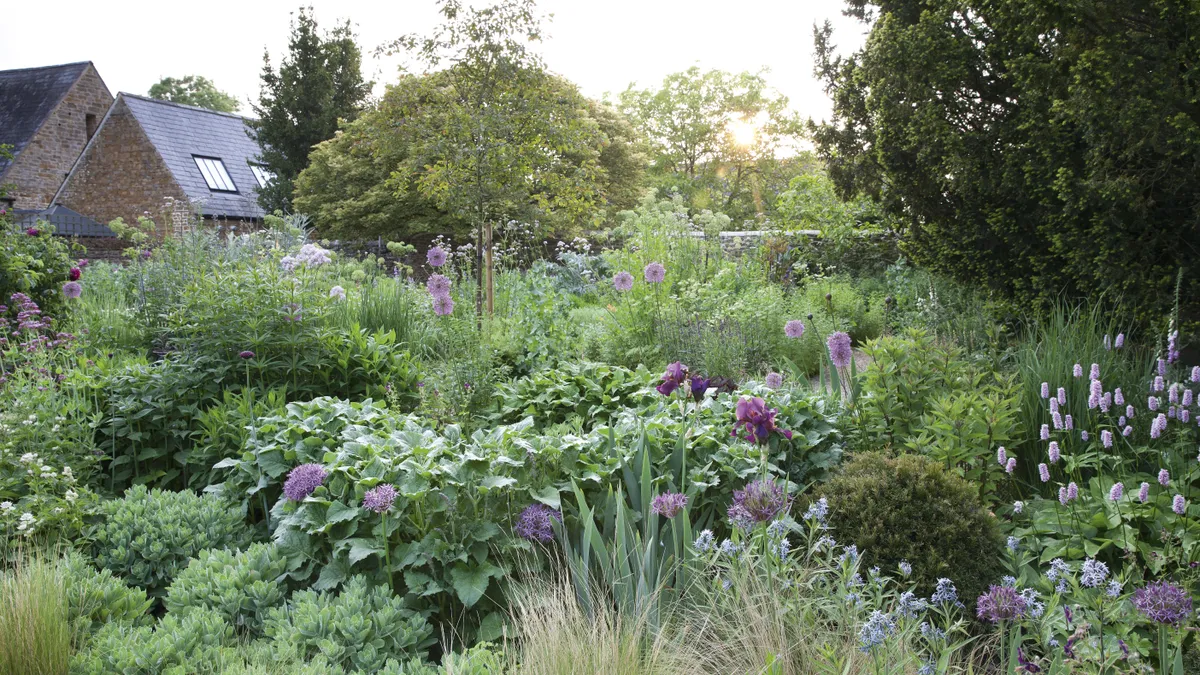
Since Petra and Luke moved to this house five years ago, garden projects have extended into years of development. With the help of long-standing gardener Kevin, the overgrown shrubs entangled with roaming Clematis montana are now gone. In their place sit a terrace, formal lawn, deep borders and now the new herb garden. Softening the edges of the property are the early stages of an orchard and woodland garden, both gently reaching out to the surrounding pockets of deciduous trees and meadow grassland, that form the English Heritage site of Deddington Castle. “We get a lot of wildlife in the garden, including many insects and birds, which have some influence on the plants we choose and how we garden,” says Petra. A tidy and trim after the first flowers during midsummer ensures the display goes on later into the year, while a cut back and weed in spring helps to keep things in order.
Despite planting additional trees and shrubs, the raised aspect of the garden makes it exposed to the wind and so staking and plant support is always high on the agenda. For this, Petra uses a mix of natural woven pea sticks and permanent rusted metal supports that can be installed quickly, “there is so much to do, we just don’t have the time to stake everything”. Although looking around the garden you wouldn’t know. Planting, layout and design appear to be in delicate balance. While providing nourishment for all the senses the garden illustrates perfectly Petra’s belief that “practical can be beautiful.”
Key Plants from Castle End
1
Rosa ‘Charles de Mills’
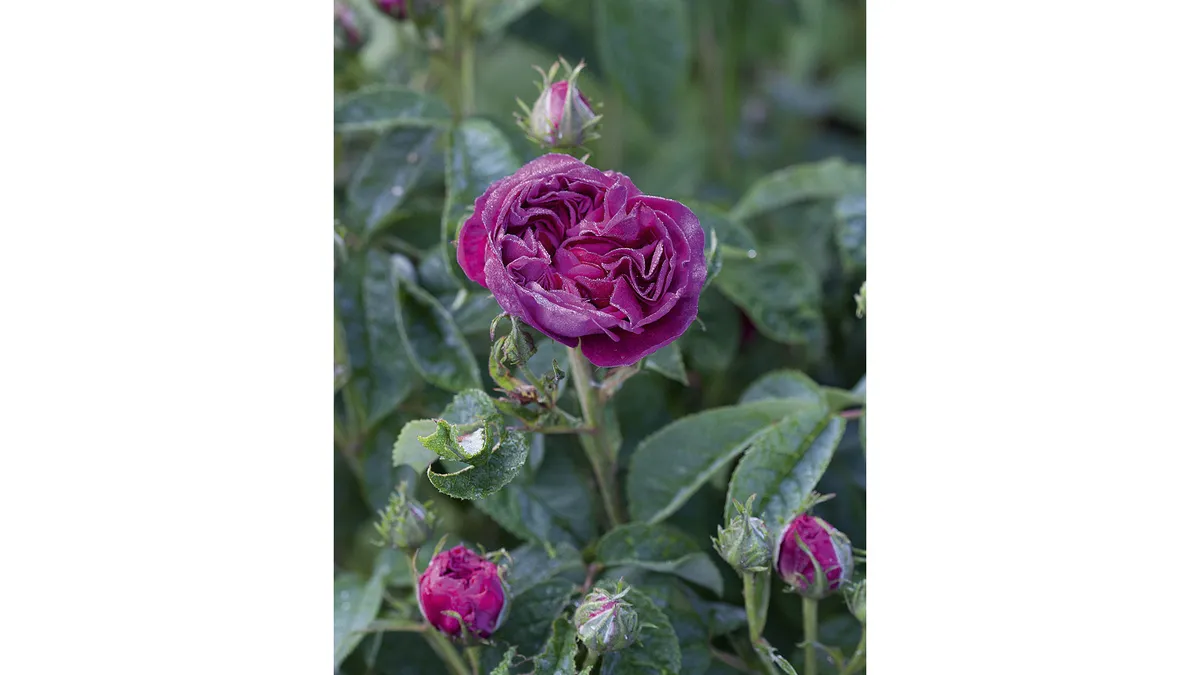
A rose that adds a quintessential English touch to the borders. A favourite of Petra’s, its opulent flowers glow with bright magenta petals, filling parts of the garden with their timeless scent. 1.2m. AGM*. RHS H6, USDA 5a-9b†.
2
Thalictrum aquilegiifolium
An erect herbaceous perennial with handsome, softly divided, glaucous foliage in spring, soon followed by clouds of purple-lilac to pale-pink flowers held on stiff stems. Prefers moist soil in sun or part shade. 50cm. RHS H5, USDA 5a-8b.
3
Allium fistulosum
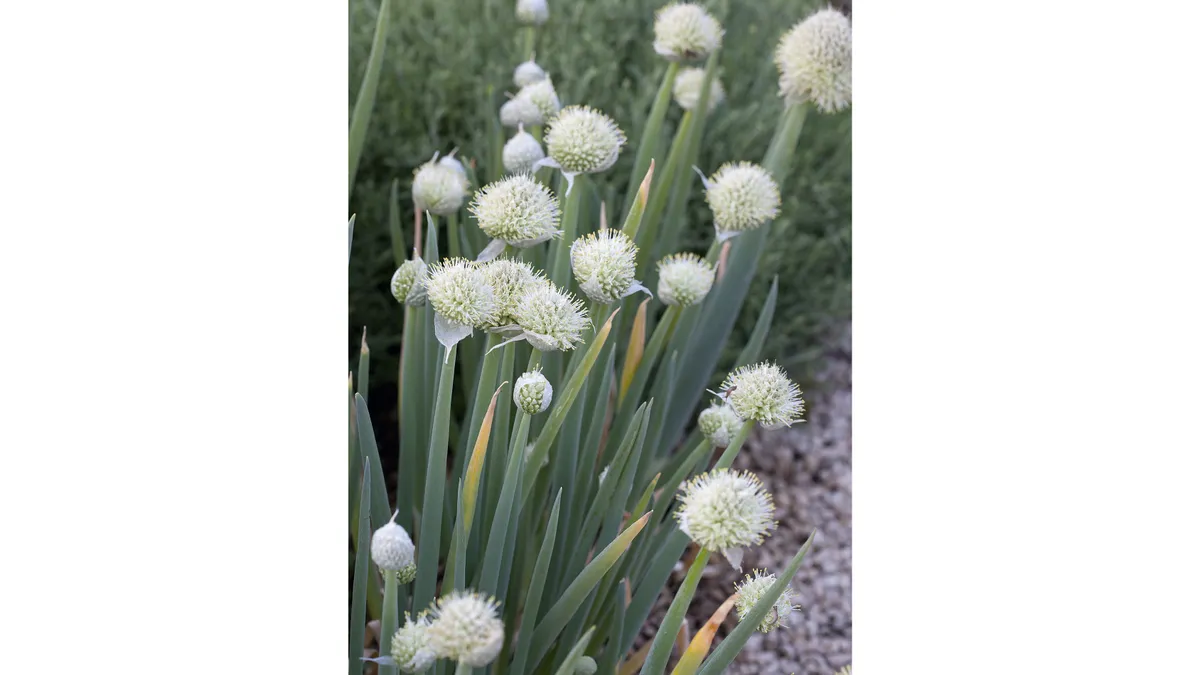
4
Digitalis purpurea
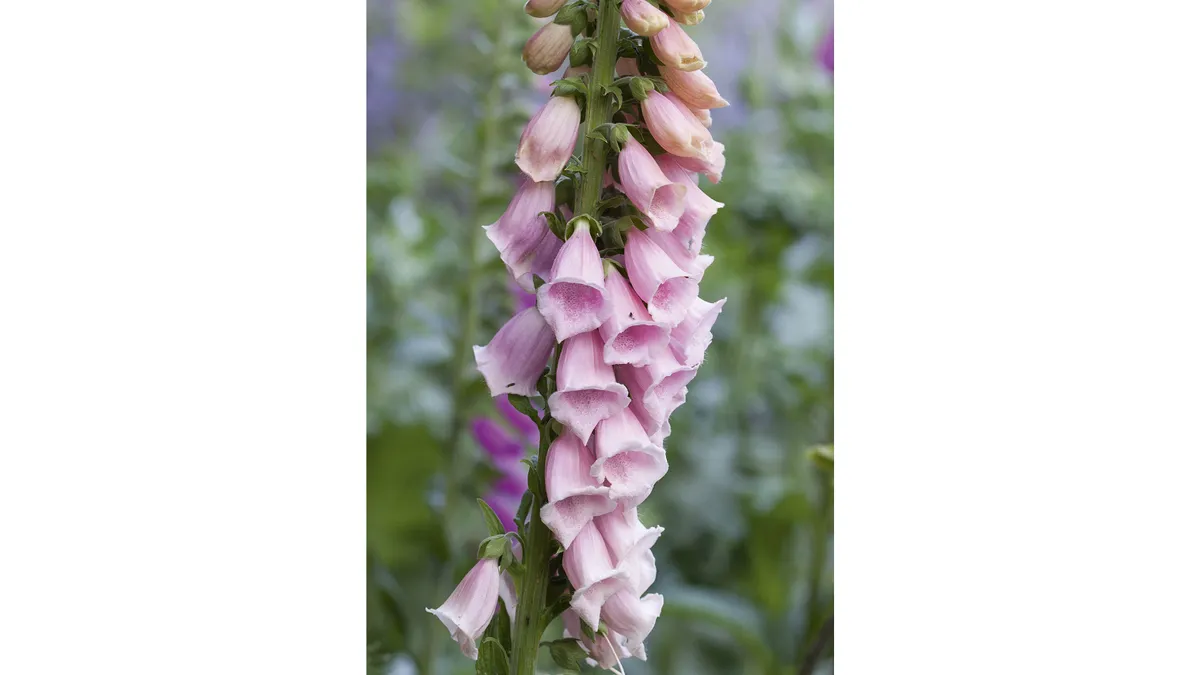
A promiscuous biennial forming a rosette of soft-haired green leaves. Flower spikes appear in the second year with masses of tubular hanging flowers in varying shades of pink and purple. 2m. RHS H7, USDA 4a-8b.
5
Angelica archangelica
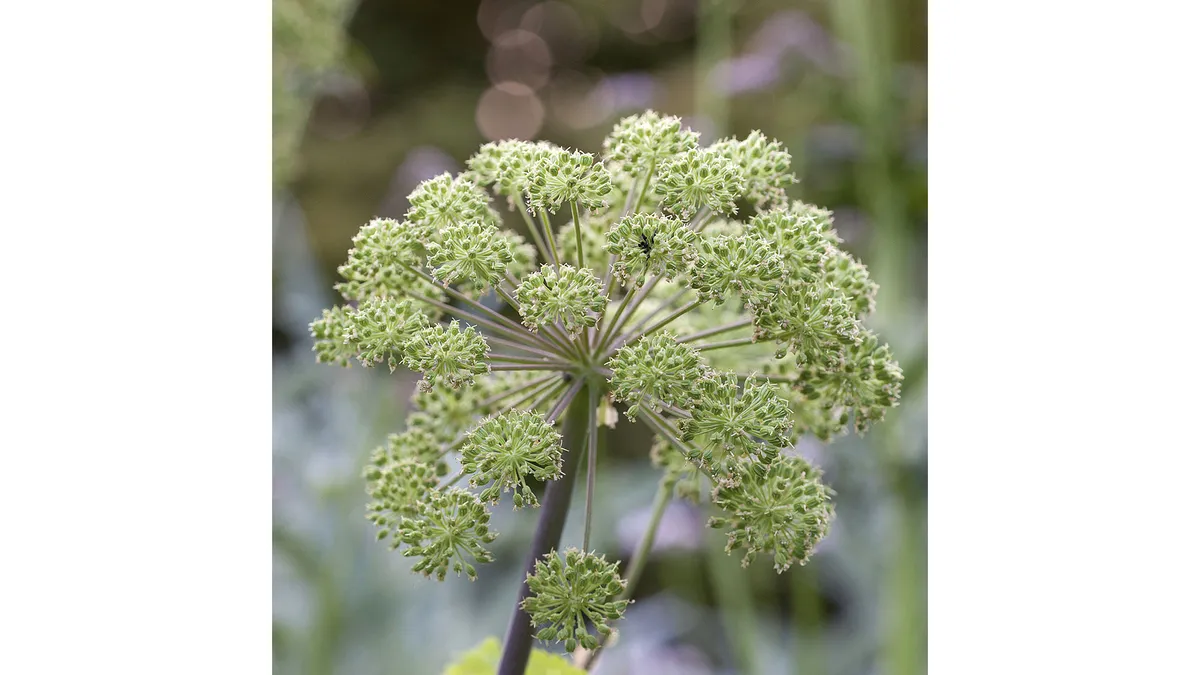
A majestic, short-lived perennial with fantastic globe-shaped inflorescence in midsummer. Prefers moist soil in sun or part shade. 2m. RHS H6, USDA 5a-7b.
6
Astrantia major ‘Claret'
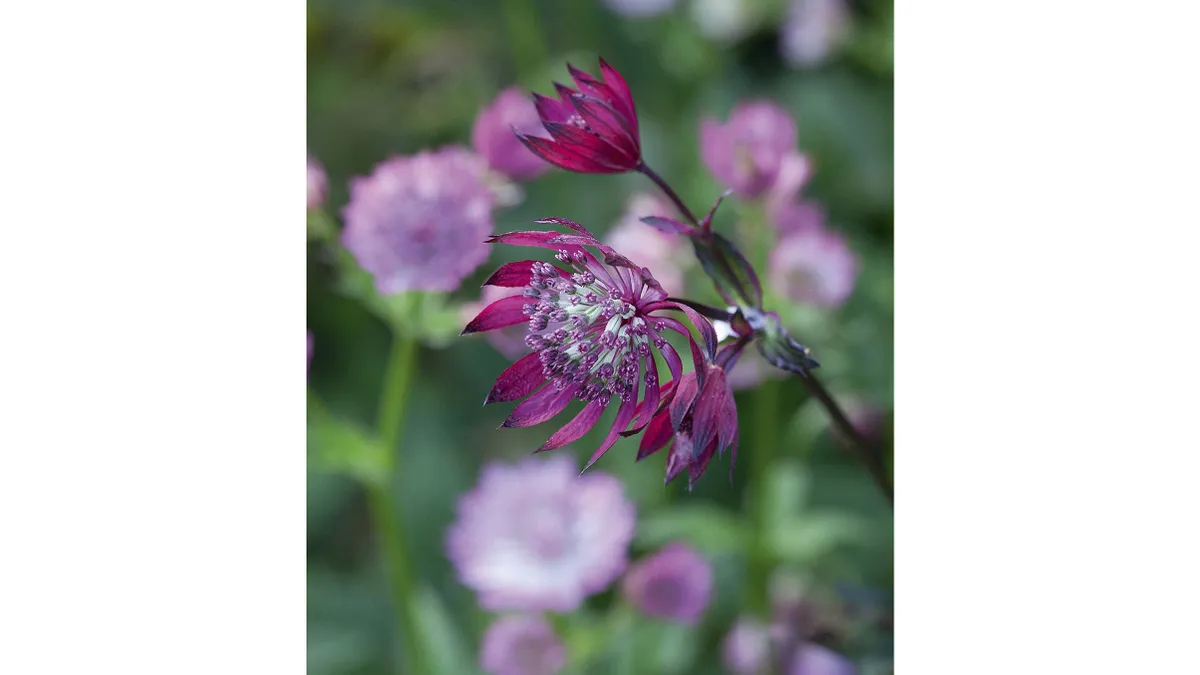
A reliable perennial with a dense clump of emerald palmate leaves, above which sit numerous tiny umbles of purplish red. Prefers full sun to part shade and moist soil. 60cm. RHS H7, USDA 4a-7b.
7
Cynara cardunculus
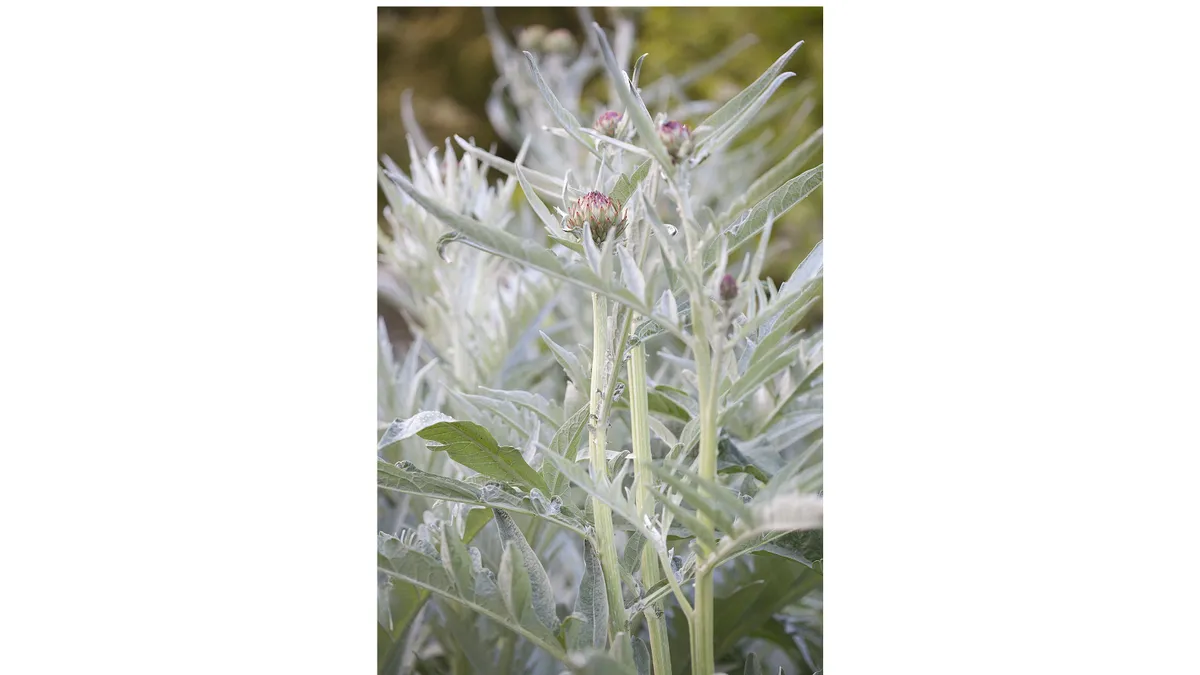
An imposing, giant perennial, forming a magnificent clump of serrated silver leaves. Large, thistle-like flowers appear on tall stems in late summer. Prefers full sun in most free-draining soils. 2.5m. AGM. RHS H5, USDA 7a-9b.
8
Iris sibirica
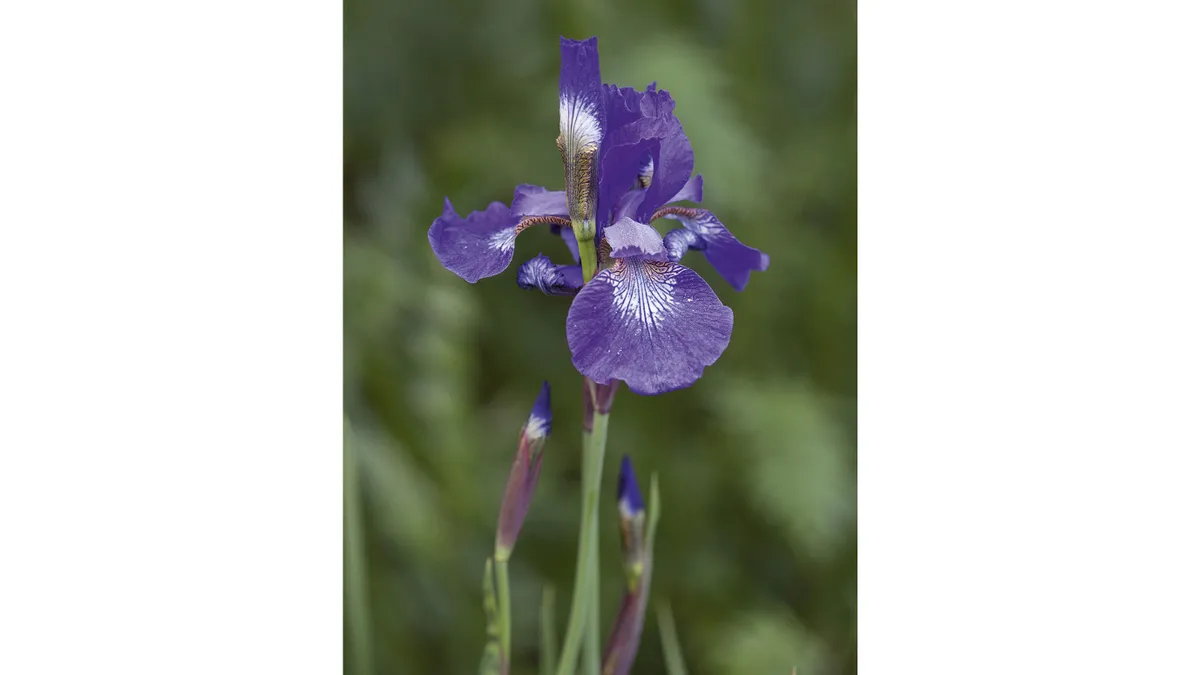
A rhizomatous perennial with elegant flowers of purplish-blue, detailed with white veining and bronze colouring towards the centre and grass-like leaves. 50cm. RHS H7, USDA 3a-8b.
9
Persicaria bistorta ‘Superba’
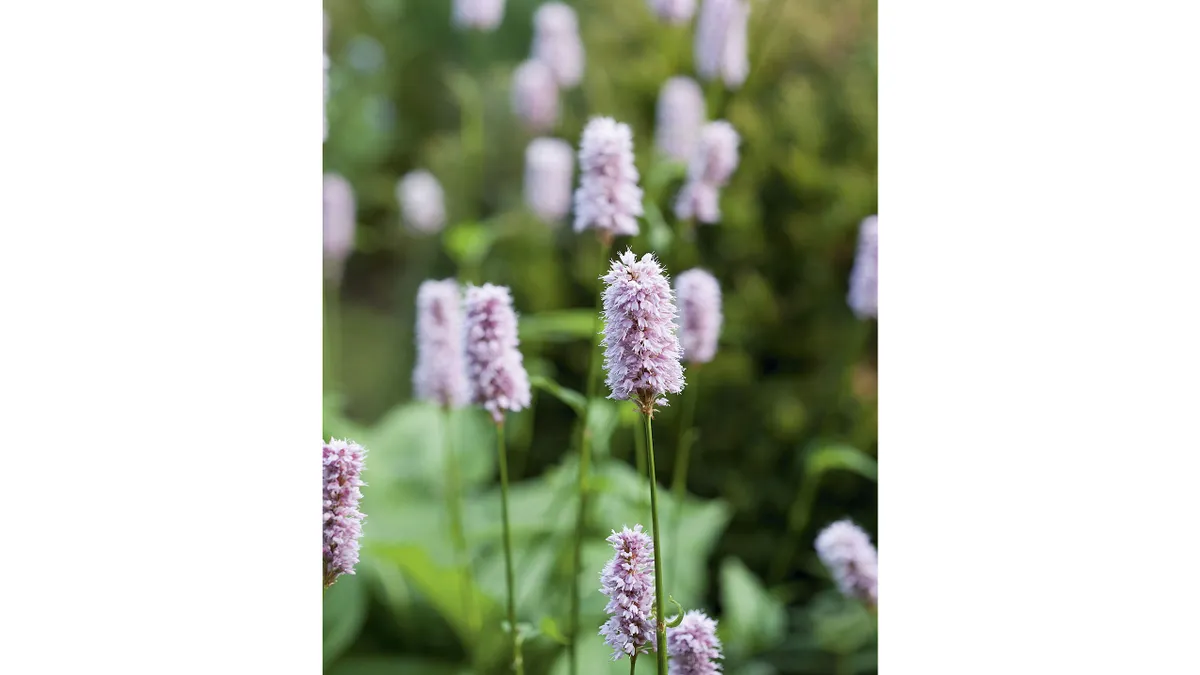
A vigorous, clump-forming perennial with large, deeply veined leaves forming a handsome clump. From midsummer, dense pink spikes rise above the foliage on vertical stems. 1m. AGM. RHS H7, USDA 3a-7b.
10
Amsonia tabernaemontana

A tidy, clump-forming perennial with singular stems rising from the base, holding small, lance-shaped leaves and topped with terminal clusters of steel-blue, star-shaped flowers in summer. 80cm. RHS H5, USDA 3a-9b.
11
Rosa ‘De Resht’
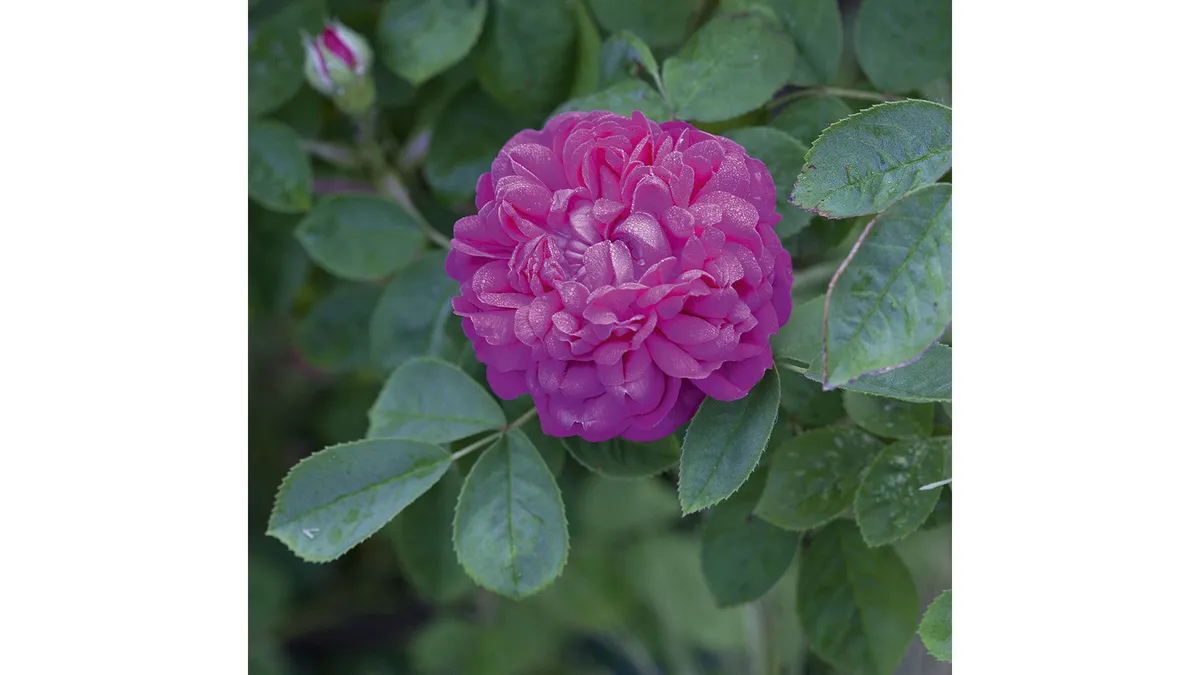
A compact and well-behaved rose with dark-green foliage and fully double flowers that are highly fragrant and bright magenta in colour. 1m. AGM. RHS H7, USDA 4a-9b.
12
Silene fimbriata
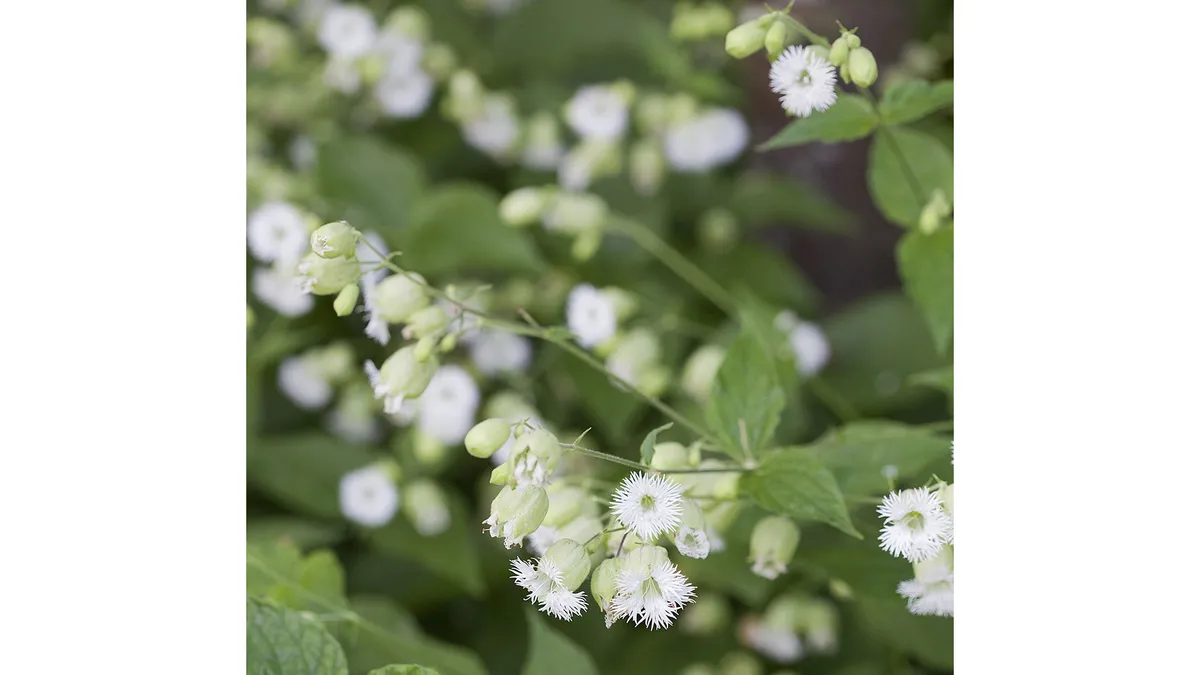
A delicate perennial flowering throughout summer over soft mounds of emerald-green foliage. White-fringed petals crown an inflated green calyx, giving this plant its distinctive flower. 30cm. RHS H6.
13
Valeriana officinalis
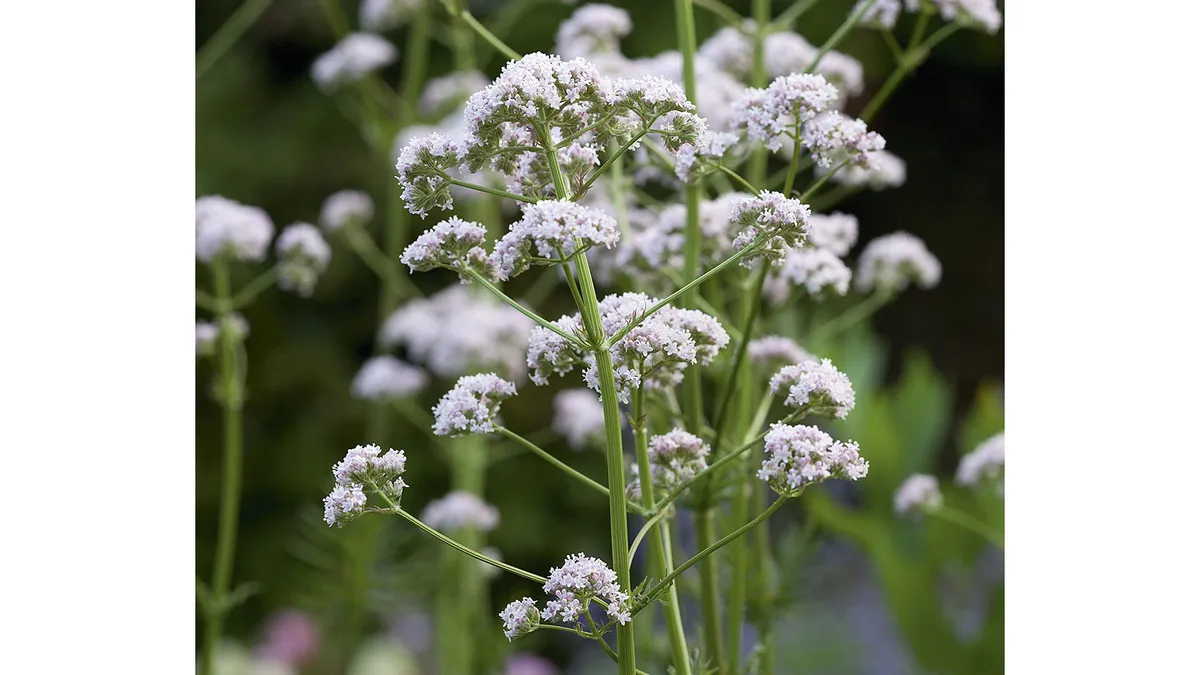
An upright perennial with aromatic pinnate leaves in spring, soon giving way to slender stems that are crowned with clusters of tiny flowers, ranging from soft pink to white in colour. 60cm. RHS H4, USDA 4a-7b.
14
Borago officinalis
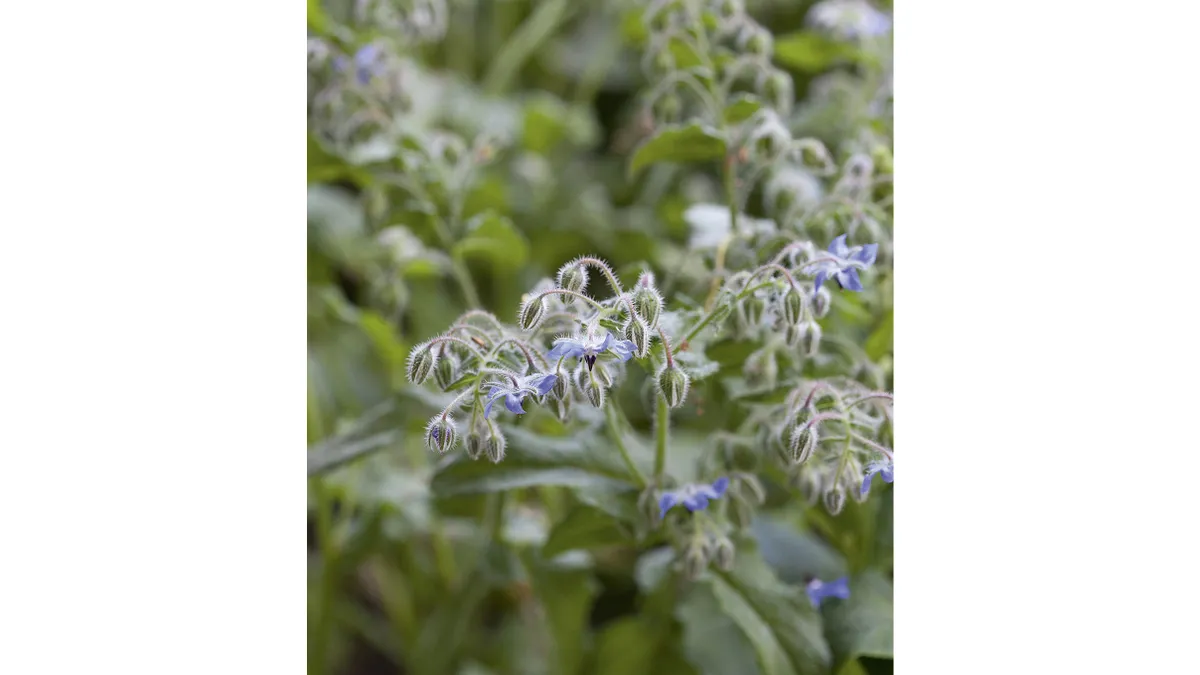
A vigorous annual that forms a generous clump of large, hirsute leaves, topped with starry blue flowers throughout summer. 40cm. RHS H5, USDA 2a-11.